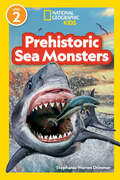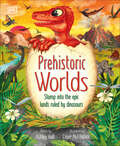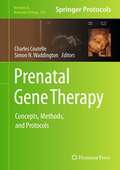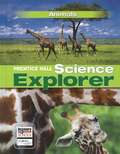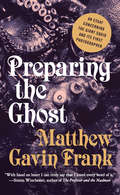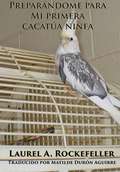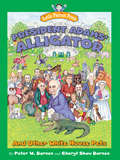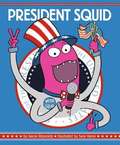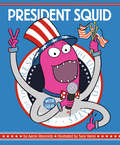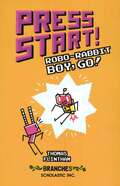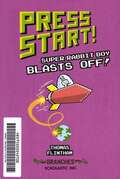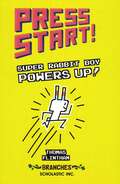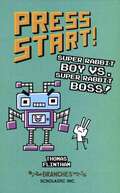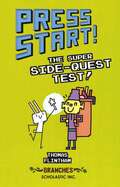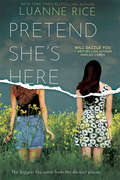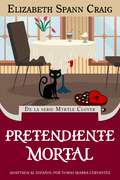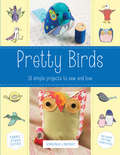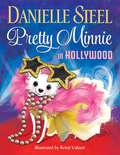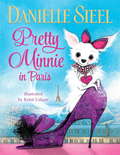- Table View
- List View
Prehistoric Sea Monsters (National Geographic Readers)
by National Geographic KidsMeet Megalodon and more of the biggest, coolest, and creepiest marine animals from the prehistoric era!Teeth, tails, and scales—oh my! Newly independent readers will be transported back to a time when bugs were big and monsters ruled the deep. Each page of this dazzling Level 2 reader is packed with jaw-dropping facts on the fiercest predators of the ancient oceans. Learn about Megalodon, the largest shark ever to have lived; Jaekelopterus, a human-size scorpion; Helicoprion, a fish whose teeth were in the shape of a circular saw; and more!National Geographic Readers feature engaging text carefully vetted by expert educators and accompanied by magnificent National Geographic photography. Level 2 books feature more challenging text to help readers build their confidence, skills, and vocabulary. Featuring incredible illustrations by renowned paleo-illustrator Franco Tempesta and some of the coolest species of prehistoric marine animals, National Geographic Readers Prehistoric Sea Monsters is sure to be a page-turning hit with kids!
Prehistoric Worlds: Stomp Into the Epic Lands Ruled by Dinosaurs (The Magic and Mystery of the Natural World)
by Ashley HallEnter the prehistoric world for an incredible four-billion year journey in this book for young history and dinosaur enthusiasts.Take children on a fascinating journey through history, showing them how and where their favorite dinosaurs came to exist, and how events from billions of years ago are still affecting our natural world today.Packed with dynamic historical content, Prehistoric Worlds combines illustrations and photos to help young historians aged 7-9 learn all about the period that shaped our planet. Meet favorite dinosaurs, from the terrifying T.Rex to the spiky stegosaurus; nurture your inner paleontologist by learning about prehistoric plant and animal fossils; and discover destructive extinction events that changed the world forever.Inside this dinosaur book for children, you&’ll find: - A wide range of prehistoric life and its chronology, including plants and animals from this period, and the continental shifts that shaped our world today.- Information on natural history written by palaeontologist and scientist Ashley Hall.- Illustrations and expert CGI imagery showing different types of dinosaur species.Plants flourish, birds evolve, and dinosaurs charge across the pages of this lively and colorful book. From oceans teeming with life to destructive asteroids, children will discover the incredible timeline of prehistoric life that resulted in the world we recognize today.
Prenatal Gene Therapy
by Simon N. Waddington Charles CoutelleThe emerging field of prenatal gene therapy is founded on scientific and technical advances in fetal medicine, molecular biology and gene therapy. This preclinical research subject aims at applying gene therapy during pregnancy for the prevention of human diseases caused by early onset congenital or gestation related conditions. In Prenatal Gene Therapy: Concepts, Methods and Protocols, expert researchers in the field detail many of the protocols which are now commonly used to study gene therapy, fetal medicine and medical ethics. These include detailed protocols for vector production, for breeding and husbandry of the animal models, for the surgical procedures of gene delivery in large and small animals and for the methods of gene transfer analysis. Written in the highly successful Methods in Molecular BiologyTM series format, chapters include introductions to their respective topics, lists of the necessary materials and reagents, step-by-step, readily reproducible laboratory protocols, and key tips on troubleshooting and avoiding known pitfalls. Thorough and intuitive, Prenatal Gene Therapy: Concepts, Methods and Protocols seeks to aid scientists in the further study of prenatal disease and gene therapy projects beyond the scope of fetal medicine.
Prentice Hall Brief Review: The Living Environment
by John Bartsch Mary P. ColvardSimilarities and Differences Among Living, Organisms, Homeostasis in Organisms, Genetic Continuity, Reproduction and Development, Evolution, Ecology, Human Impact on Ecosystems, Scientific Inquiry and Skills, Laboratory Skills.
Prentice Hall Life Science (2nd edition)
by Prentice HallThis book comprises seven units of twenty five chapters and the contents include Characteristics of Living Things, Simple Organisms, Plants, Animals, Human Biology, Heredity and Adaptation, and Ecology.
Prentice Hall Science Explorer: Animals
by Michael J. Padilla Ioannis Miaoulis Martha Cyr Jan JennerThis science book covers Animal Behavior, Arthropods, Amphibians, Echinoderms, Sponges, Birds, Cnidarians, Reptiles, Mammals, Mollusks, Worms and Fishes. It also provides lab activities in every chapter.
Prentice Hall Science Explorer: Animals
by Prentice HallA book of Science Explorer on animals, that includes Sponges, Cnidarians, and Worms, Mollusks, Arthropods, and Echinoderms, Fishes, Amphibians, and Reptiles, Birds and Mammals, Animal Behavior, Reference Section/Skills Handbook, Visual exploration of concepts, Everyday application of science concepts, Practice of specific science inquiry skills, etc.
Preparing the Ghost: An Essay Concerning the Giant Squid and Its First Photographer
by Matthew Gavin FrankMemory, mythology, and obsession collide in this "slyly charming" (New York Times Book Review) account of the giant squid. In 1874, Moses Harvey--eccentric Newfoundland reverend and amateur naturalist--was the first person to photograph the near-mythic giant squid, draping it over his shower curtain rod to display its magnitude. In Preparing the Ghost, what begins as Harvey's story becomes spectacularly "slippery and many-armed" (NewYorker.com) as Matthew Gavin Frank winds his narrative tentacles around history, creative nonfiction, science, memoir, and meditations about the interrelated nature of them all. In his full-hearted, lyrical style, Frank weaves in playful forays about his trip to Harvey's Newfoundland home, his own childhood and family history, and a catalog of peculiar facts that recall Melville 's story of obsession with another deep-sea dwelling leviathan. "Totally original and haunting" (Flavorwire), Preparing the Ghost is a delightfully unpredictable inquiry into the big, beautiful human impulse to obsess.
Preparándome para mi primera cacatúa ninfa
by Laurel A. Rockefeller Matilde Durón Aguirre«Preparándome para mi primera cacatúa ninfa» es una guía para ti y tus hijos, para ayudarles a saber cómo prepararse antes de traer a casa su primera cacatúa ninfa. A diferencia de la mayoría de los libros acerca de ninfas, éste no trata de cubrirlo todo, pero se enfoca en lo que necesitas tener listo para iniciar tu nueva vida en compañía de tu ave. Con este libro lleno de anécdotas e imágenes, conocerás la vida con cacatúas ninfa a través de mis muchos años en compañía de ellas. ¡Un libro divertido para cualquiera que ame a los animales! Los temas abarcados incluyen: *Las ninfas son cacatúas *Jaulas primarias *Jaulas de viaje y jaulas hospital (incluidas jaulas para vuelos domésticos e internacionales) *Espacios de juego *Comida *Juguetes *Perchas *Recipientes de alimento *Comunicación con una ninfa nueva o tímida *Prevención de la psitacosis (la principal enfermedad transmitida entre humanos y aves) *Juegos para jugar con tu nueva ave
Preserving the Pennsylvania Wilds: The Rebirth of Elk Country (The History Press)
by Mario ChiappelliA Legacy of ConservationEvery year thousands flock to the Pennsylvania Wilds to be among nature and its famous elk herd. In the past, dangerous levels of hunting and industrial development forever altered Pennsylvania's natural landscape and drove its native elk to near extinction. In response, concerned sportsmen and conservationists pushed the state legislature to create a game commission in the late 1800s to enforce game laws and protect the herd. The Pennsylvania Game Commission then sought to reintroduce the once mighty elk herd in the early twentieth century, shipping fifty elk via train from Jackson Hole and Yellowstone. Conservation movements continued to enhance the state's environmental landscape that faced new threats from logging and mining industries and by the 1980s, the Wilds was on a path to full restoration. Author Mario Chiappelli reveals the history of how the Pennsylvania Wilds and its elk herd remain as vibrant as ever today.
President Adams' Alligator
by Cheryl S. Barnes Peter W. BarnesDid you know President John Quincy Adams had a pet alligator? He kept it in a bathtub in the East Room of the White House. But President Adams wasn't the only commander-in-chief with an unusual pet. Along with a menagerie of dogs, cats, horses and birds, presidents and their families also had pet snakes, raccoons, bears, cows, mice, and more. Meet Thomas Jefferson's mockingbird, Dick, who ate from the president's mouth; Warren Harding's dog, Laddie Boy, who was served a birthday cake made of dog biscuits; and Teddy Roosevelt's pony, Algonquin, who rode up the White House elevator. President Adams' Alligator teaches children about the presidency through pets of the presidents, from George Washington to Barack Obama.<P> Advisory: Bookshare has learned that this book offers only partial accessibility. We have kept it in the collection because it is useful for some of our members. To explore further access options with us, please contact us through the Book Quality link on the right sidebar. Benetech is actively working on projects to improve accessibility issues such as these.
President Squid
by Aaron Reynolds Sara VaronJoin Aaron Reynolds and Sara Varon as they explore the ideal qualities of leaders, diplomats...and giant squid. Squid knows all about being president. It means living in a big house, doing all the talking--oh, and having a tie is crucial. He's all set! In the next election, make a more informed choice. Vote for President Squid!
President Squid
by Aaron ReynoldsJoin Aaron Reynolds and Sara Varon as they explore the ideal qualities of leaders, diplomats...and giant squid. Squid knows all about being president. It means living in a big house, doing all the talking—oh, and having a tie is crucial. He's all set! In the next election, make a more informed choice. Vote for President Squid!And this is the fixed-format version, which looks almost identical to the print edition!
Press Start Robo-Rabbit Boy Go! (Press Start!)
by Thomas FlinthamPick a book. Grow a Reader!This series is part of Scholastic's early chapter book line, Branches, aimed at newly independent readers. With easy-to-read text, high-interest content, fast-paced plots, and illustrations on every page, these books will boost reading confidence and stamina. Branches books help readers grow!Uh-oh, Super Rabbit Boy is in big trouble. He's been kidnapped by Queen Spooky and her ghost troop! Without Super Rabbit Boy, Animal Town is scared. So meanie King Viking creates Robo-Rabbit Boy to help. Robo-Rabbit Boy is fast like Super Rabbit Boy and strong like Super Rabbit Boy, but is he a hero like Super Rabbit Boy? This latest Press Start! adventure is fully charged!With full-color art by Thomas Flintham!
Press Start Super Rabbit Boy Blasts Off! (Press Start! #5)
by Thomas FlinthamPick a book. Grow a Reader!This series is part of Scholastic's early chapter book line, Branches, aimed at newly independent readers. With easy-to-read text, high-interest content, fast-paced plots, and illustrations on every page, these books will boost reading confidence and stamina. Branches books help readers grow!Help! Meanie King Viking is causing trouble out in space! Super Rabbit Boy knows he can stop him. But can he fly a wobbly Level 1 rocketship, stop an army of space robots, and find King Viking? This latest Press Start! adventure is simply out of this world!With full-color art by Thomas Flintham!
Press Start Super Rabbit Boy Powers Up! (Press Start! #2)
by Thomas FlinthamPick a book. Grow a Reader!This series is part of Scholastic's early chapter book line, Branches, aimed at newly independent readers. With easy-to-read text, high-interest content, fast-paced plots, and illustrations on every page, these books will boost reading confidence and stamina. Branches books help readers grow!Meanie King Viking is tired of always losing to hero Super Rabbit Boy. So he's gone to the Secret Lands to search for the legendary Super Power Up, which has powers even Super Rabbit Boy won't be able to defeat. But Super Rabbit Boy is determined to stop King Viking. Can he navigate through the Secret Lands, locate the hidden dungeon, defeat the mini bosses, and claim the legendary Super Power Up before King Viking does it first? With danger everywhere, this may be the most difficult quest yet for Super Rabbit Boy.With full-color art on every page by Thomas Flintham!
Press Start Super Rabbit Boy vs. Super Rabbit Boss! (Press Start! #4)
by Thomas FlinthamPick a book. Grow a Reader!This series is part of Scholastic's early chapter book line, Branches, aimed at newly independent readers. With easy-to-read text, high-interest content, fast-paced plots, and illustrations on every page, these books will boost reading confidence and stamina. Branches books help readers grow!Oh no! Hero Super Rabbit Boy has been sucked into a strange, yet familiar new world. It's an upside-down land where everyone good is now bad and everyone bad is now good. And the major meanie in this land is none other than Super Rabbit . . . Boss? Can Super Rabbit Boy make friends with a good King Viking and form a good Robot Army before Super Rabbit Boss destroys everyone and everything in sight? And will Super Rabbit Boy ever find a way to make it back to his real world? This quest could be the most epic adventure yet! With full-color art on every page by Thomas Flintham!
Press Start The Super Side-Quest Test! (Press Start! #6)
by Thomas FlinthamThis time Super Rabbit Boy will need the power of the Mega Wand to defeat the evil King Viking—but first he must go on a seemingly endless series of quests before he can obtain the wand and save the day.
Pretend She's Here (Scholastic Press Novels Ser.)
by Luanne RiceMega-bestselling author Luanne Rice returns with a ripped-from-the-headlines story of a girl who is kidnapped by her friend's family.Emily Lonergan's best friend died last year.And Emily hasn't stopped grieving. Lizzie Porter was lively, loud, and fun -- Emily's better half. Emily can't accept that she's gone.When Lizzie's parents and her sister come back to town to visit, Emily's heartened to see them. The Porters understand her pain. They miss Lizzie desperately, too.Desperately enough to do something crazy.Something unthinkable.Suddenly, Emily's life is hurtling toward a very dark place -- and she's not sure she'll ever be able to return to what she once knew was real.From New York Times bestselling author Luanne Rice comes a breathless, unputdownable story of suspense, secrets -- and the strength that love gives us to survive even the most shocking of circumstances.
Pretendiente Mortal: Myrtle Clover No. 18 (Myrtle Clover #18)
by Elizabeth Spann CraigEl trayecto del amor verdadero nunca fue tranquilo. Según Myrtle, Eloise Crane ha intentado echarle el lazo a Miles desde hace mucho tiempo. Aunque Miles sale ahora con ella, no parece muy entusiasmado. Myrtle cree que se ha rendido tras quedarse sin excusas plausibles. Eloise la pone de los nervios, así que intenta evitarla en la medida de lo posible. Esto no es fácil, ya que Eloise está decidida a participar cada vez que Miles y Myrtle están juntos. Cuando Myrtle descubre a Eloise en un restaurante besuqueándose con otro caballero, le cae aún peor. Y concluye que Eloise no ha causado más que problemas cuando su otro pretendiente aparece muerto. Con Miles como sospechoso, Myrtle debe ponerse manos a la obra para limpiar su nombre y encontrar al asesino antes de que vuelva a atacar.
Pretty Birds: 18 Simple Projects to Sew and Love
by Virginia LindsayCreate colorful peacocks, cheerful canaries, and adorable penguins with these simple, beautiful projects to sew and love. With pattern templates included and step-by-step instructions, you can creatively put together pretty bird crafts for your friends, and even more for yourself! The birds you create are not just unique and cute decorations but also little critters than can double as plushies, pillows, and more. Before you know it you’ll have dozens of unique birds decorating your home. Pretty Birds is a must-have for avid bird lovers and crafters alike.
Pretty Kitty
by Karen BeaumontA counting picture book in rhyme about a lonely old man whose heart is slowly melted by an ever-growing number of kitties hoping to find a home.In this charming counting book, Pretty Kitty, a lonely old man discovers one kitty on his front step. But he does not want a kitty cat—scat! As the number of kitties grows, will the man find room in his heart—and home—for his new feline friends? A playful rhyming text makes this counting book perfect for sharing!- GODWIN BOOKS -
Pretty Minnie in Hollywood
by Danielle SteelFrom mega-bestselling author Danielle Steel comes an adorable new children&’s picture book featuring her very own Chihuahua! Lights, camera, adorable! Pretty Minnie is back, and it&’s her big break when she visits the glitz and glamour of Hollywood! Whether sightseeing with her best friend, taking a dip in the fancy hotel pool, or having a costume fitting at the movie studio, Minnie&’s star quality shines as she becomes everyone&’s favorite motion-picture pup. This dazzling tale will have young readers shouting, &“Hooray for Hollywood!&”&“detailed illustrations give Minnie an engaging personality that's hard to resist, and young readers will enjoy Minnie's tiny costumes and fancy accessories.&”—Kirkus&“While Steele&’s charm-filled plot features a stylish dog and her exciting journeys, it also zeroes in on the inseparable bond between a little girl and her precious pup. An endearing read for children with pets.&”—BooklistPraise for Pretty Minnie in Paris: &“Will delight young fashionistas.&”—Publishers Weekly
Pretty Minnie in Paris
by Danielle Steel Kristi ValiantFrom #1 New York Times bestselling author Danielle Steel comes a charming picture book about Minnie, a tiny Chihuahua with big style!"will delight young fashionistas." -- Publishers Weekly Inspired by the adorable adventures of bestselling author Danielle Steel's own Chihuahua, Pretty Minnie in Paris is the stylish, ooh la la tale of a fashionable Parisian pup out on the town. Lost backstage during a noisy, crowded fashion show, tiny Minnie is separated from her owner, the girl she loves best. Quel désastre! But chaos turns to couture when Minnie unexpectedly finds herself the star of the runway. With a dreamy Paris backdrop and an atelier full of adorable outfits, Pretty Minnie in Paris is sure to be in vogue as the season's must-have tale for little girls--and Danielle Steel fans of all ages--who love clothing, glamour, glitter, and all things à la mode.From the Hardcover edition.
